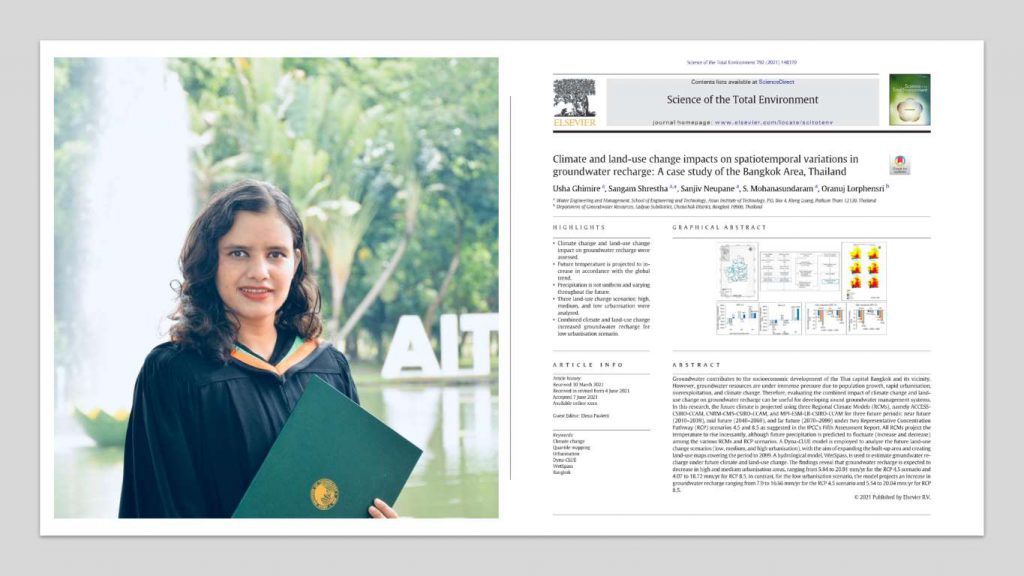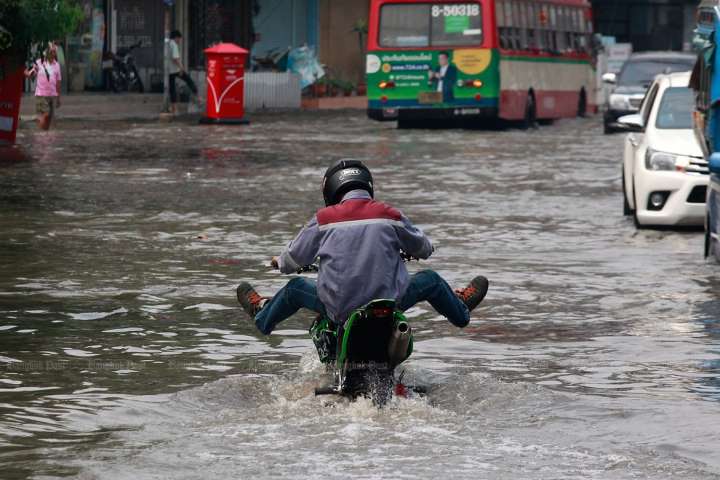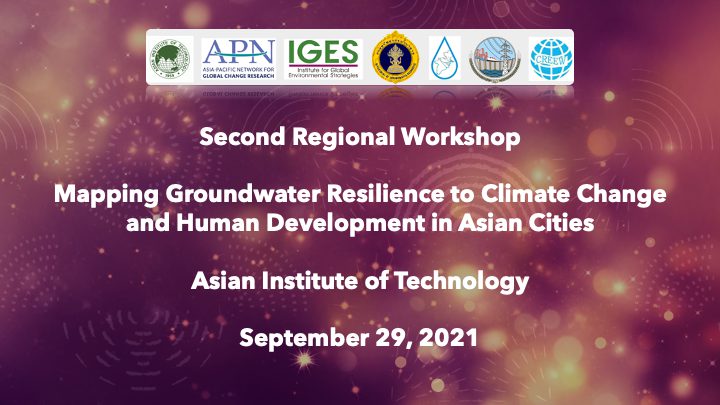Congratulations Ms. Usha Ghimire for your publication entitled ‘Climate and land-use change impacts on spatiotemporal variations in groundwater recharge: A case study of the Bangkok Area, Thailand’ in Science of the Total Environment (Publisher: Elsevier; ISI IF: 6.551, Q1).
This study was conducted under the project “Mapping groundwater resilience to climate change and human development in Asian cities” (CRRP 2018-01MY-Shrestha) funded by the Asia-Pacific Network for Global Change Research (APN) which intends to examine the impact of climate change and land-use change on groundwater recharge in Bangkok and its vicinity.

Groundwater contributes to the socioeconomic development of the Thai capital Bangkok and its vicinity. However, groundwater resources are under immense pressure due to population growth, rapid urbanisation, overexploitation, and climate change. Therefore, evaluating the combined impact of climate change and land-use change on groundwater recharge can be useful for developing sound groundwater management systems. In this research, the future climate is projected using three Regional Climate Models (RCMs), namely ACCESS-CSIRO-CCAM, CNRM-CM5-CSIRO-CCAM, and MPI-ESM-LR-CSIRO-CCAM for three future periods: near future (2010–2039), mid future (2040–2069), and far future (2070–2099) under two Representative Concentration Pathway (RCP) scenarios 4.5 and 8.5 as suggested in the IPCC’s Fifth Assessment Report. All RCMs project the temperature to rise incessantly, although future precipitation is predicted to fluctuate (increase and decrease) among the various RCMs and RCP scenarios. A Dyna-CLUE model is employed to analyse the future land-use change scenarios (low, medium, and high urbanisation), with the aim of expanding the built-up area and creating land-use maps covering the period to 2099. A hydrological model, WetSpass, is used to estimate groundwater recharge under future climate and land-use change. The findings reveal that groundwater recharge is expected to decrease in high and medium urbanisation areas, ranging from 5.84 to 20.91 mm/yr for the RCP 4.5 scenario and 4.07 to 18.72 mm/yr for RCP 8.5. In contrast, for the low urbanisation scenario, the model projects an increase in groundwater recharge ranging from 7.9 to 16.66 mm/yr for the RCP 4.5 scenario and 5.54 to 20.04 mm/yr for RCP 8.5.
The highlight of the study includes:
- Climate change and land-use change impact on groundwater recharge were assessed.
- Future temperature is projected to increase in accordance with the global trend.
- Precipitation is not uniform and varying throughout the future.
- Three land-use change scenarios; high, medium, and low urbanisation were analysed.
- Combined climate and land-use change increased groundwater recharge for low urbanisation scenario.



